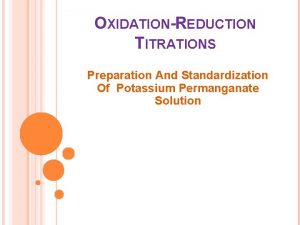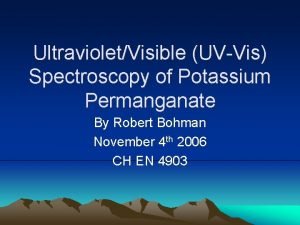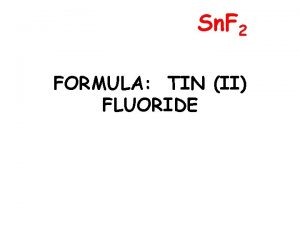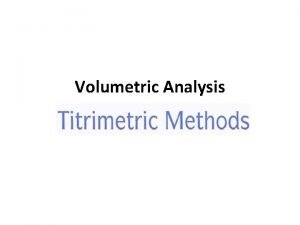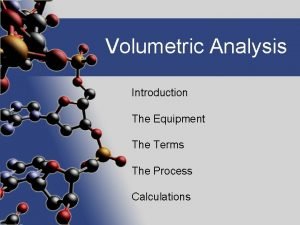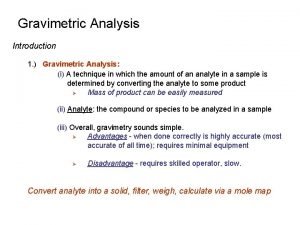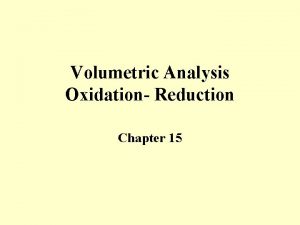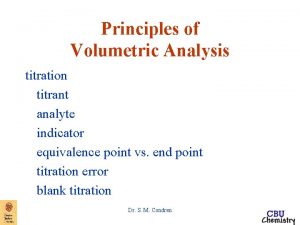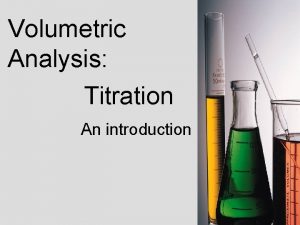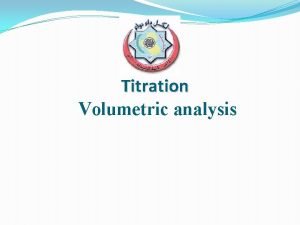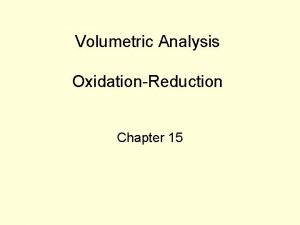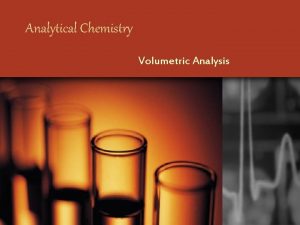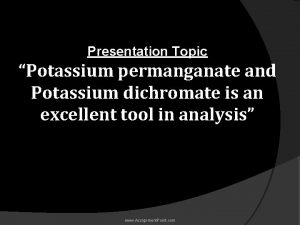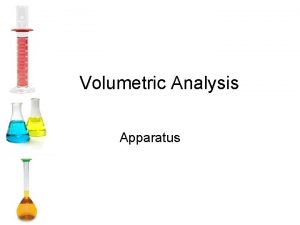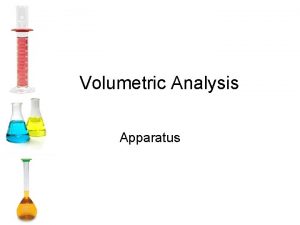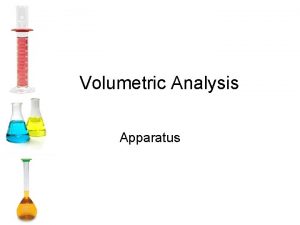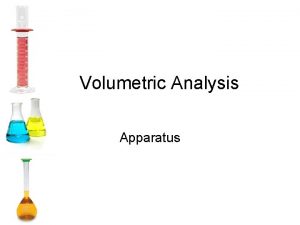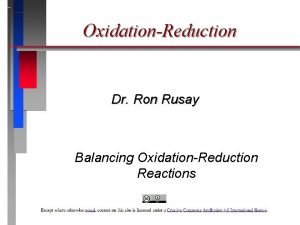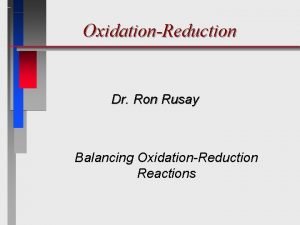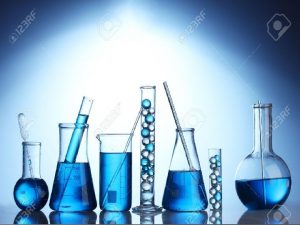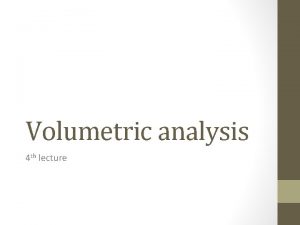Volumetric Analysis Oxidationreduction Ch 15 Potassium Permanganate Oxidising

















- Slides: 17

Volumetric Analysis Oxidation-reduction, Ch 15

Potassium Permanganate: Oxidising Agent • KMn. O 4 • Potassium Manganate (VII) • Not a primary standard • Not available in highly pure state • Decomposes in sunlight • Oxidising agent – gains 5 electrons under acidic conditions

Potassium Permanganate: Oxidising Agent • If forget to add sulphuric acid, • Oxidation states: • +7: Pink/purple • +4: Brown • +2 Colourless • NB: must use sulphuric acid as • HCl contains Cl- which can be oxidised to Cl 2 • HNO 3 is an oxidising agent

Potassium Permanganate: Oxidising Agent • Self-indicating reaction! • Pink to colourless

Reaction of Mn. O 4 - and Fe 2+ ions • Standardise potassium permanganate by reacting it with ammonium iron (II) sulphate 1 : 5 • Each Mn. O 4 - gains 5 electrons • Each Fe 2+ loses 1 electron • Can’t use iron(II) sulfate as primary standard • Spontaneous loss of water to air – efflorescence • Oxidised by air • Dilute sulphuric acid added to ammonium iron (II) sulphate • Avoids Fe 2+ oxidising to Fe 3+

Reaction of Mn. O 4 - and Fe 2+ ions Autocatalysis Dilute sulphuric acid

Determine amount of iron in an iron tablet • Iron supplement taken to treat/prevent anaemia • Iron needed in haemoglobin • Iron tablets contain anhydrous iron(II) sulphate • Fe. SO 4 • Titrate iron tablet solution against solution of potassium permanganate (known concentration)

Sodium Thiosulphate • Sodium thiosulphate • Na. S 2 O 3 • Reducing agent

Sodium Thiosulphate acts as reducing agent: reduces I 2 to I- Iodide ions

Sodium Thiosulphate • Not a primary standard • Not available in sufficiently pure state • Efflorescent • Standardised by titrating against standard solution of iodine

Iodine • Standard solution of iodine can’t be made by direct weighing • Iodine slightly vaporises/sublimes • Insoluble in water • Not a primary standard

How to obtain standard solution of iodine • React standard solution of potassium permanganate (acidified) with excess potassium iodide solution • Excess potassium iodide, excess I • All KMn. O 4 reacts completely with I • Keeps I 2 in solution • By using a standard solution of potassium permanganate we can calculate the concentration of iodine I 2

Reasons for using excess Potassium iodide KI • With Excess I • All KMn. O 4 reacts completely with I- ions to form I 2 • Keeps I 2 in solution • Iodine I 2 (non-polar) is insoluble in water (polar) • I 2 React with iodide ions to form tri-iodide ion I 3 • I 3 - identical in chemical behaviour to I 2 and soluble in water


Experiment to standardise a solution of Sodium Thiosulphate • In conical flask • Iodine formed in conical flask then reacted with sodium thiosulphate added from burette • Overall ratio • 2 Mn. O 4 - : 5 I 2 : 10 S 2 O 32 -

Detect endpoint • When solution becomes pale yellow colour (very little iodine I 2 left) • Starch indicator added, titrate till black to colourless

Experiment to standardise a solution of Sodium Thiosulphate • Colour changes • Note on starch indicator: • Added when most of iodine has disappeared (pale yellow colour) • If added too early, iodine adsorbs on to starch, less accurate titration
 Percentage composition
Percentage composition Preparation and standardization of potassium permanganate
Preparation and standardization of potassium permanganate Potassium permanganate uv vis spectrum
Potassium permanganate uv vis spectrum Water percentage composition
Water percentage composition Powerful oxidising agent
Powerful oxidising agent Oxidizing agent examples
Oxidizing agent examples Plumbic fluoride
Plumbic fluoride Difference between gravimetric and volumetric analysis
Difference between gravimetric and volumetric analysis Types of titrations
Types of titrations Volumetric analysis introduction
Volumetric analysis introduction Gravimetric analysis assignment
Gravimetric analysis assignment Titration vs back titration
Titration vs back titration Classification of gravimetric analysis
Classification of gravimetric analysis Sodium thiosulfate and sodium hypochlorite reaction
Sodium thiosulfate and sodium hypochlorite reaction Precipitation titration
Precipitation titration Volumetric analysis introduction
Volumetric analysis introduction Volumetric analysis worksheet
Volumetric analysis worksheet Titration definition
Titration definition

